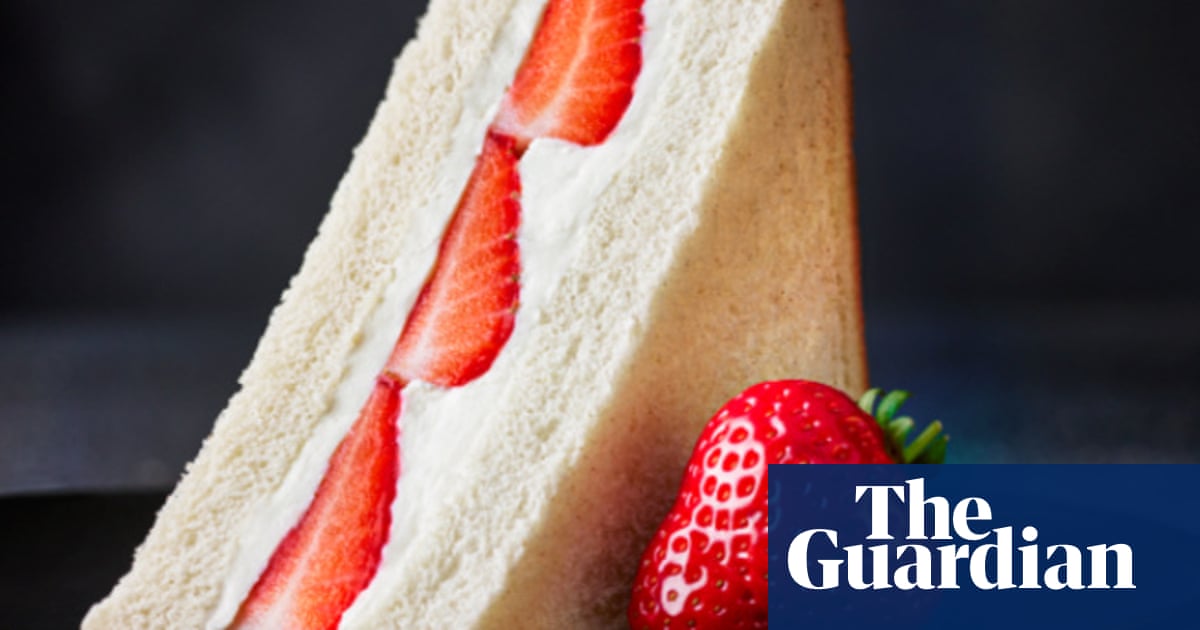If you said to a friend that you fancied Japanese food this weekend, they might be forgiven for thinking you meant sushi. But lately a new culinary export from Japan is catching up with fish and rice in the hearts and tastebuds of British foodies.
Soft, sweet and full of character, Japanese-style desserts – from mochi ice cream to matcha cookies – have been steadily gaining ground on UK shelves.
Such is their popularity, M&S has launched its own take on the strawberry sando, a Japanese convenience store favourite, a sandwich made with soft milk bread, whipped cream and neatly layered fruit.
According to some industry commentators, British retailers are taking note of consumers’ growing appetite for “joyful” sweet treats as a simple pleasure to brighten their days.
“We’re seeing people turn to food as an antidote to life’s uncertainties – they’re looking for small, joyful indulgences that feel novel, premium and culturally rich,” said Charles Banks, a co-founder of TheFoodPeople, a UK-based food trends consultancy.
“Japanese sweets … bring playful formats, surprising textures and beautifully balanced flavours that tap into this mood perfectly. Add in TikTok’s power to visually amplify the unfamiliar and suddenly these once niche delights are must-haves.”
At Ocado, searches for mochi are up 96.2% year on year, while searches for “Japanese” have risen by more than a third over the same period.
Yuki Gomi, a Japanese chef and food writer, said it was wonderful to see the trend, even if it reflected only a slice of Japan’s “rich sweets culture”, where desserts are “cute, comforting and often tied to the seasons”.
She said the appeal of these sweets lay not just in their flavour but in their texture and “in mouth-feel”. “Japanese sweets are often lighter and less sugary than their western equivalents, and there’s real joy in the textures – soft and creamy mochi ice cream, airy sponge, the crisp snap of Pocky.”
It’s that sensory experience – along with the playful fusion of Japanese flavours and sweet treats already familiar to UK shoppers – that helps explain why more of these snacks are now landing on British supermarket shelves. “Quite often, the sweets are given a Japanese twist – maybe a hint of matcha, yuzu or kinako. A familiar treat, with a fresh Japanese flavour,” she said.
Sign up toFeast
Recipes from all our star cooks, seasonal eating ideas and restaurant reviews. Get our best food writing every week
after newsletter promotion
On TikTok, the hashtag #mochi has more than 1.4m posts, #matchacookies has 10,500, and videos of Japanese cheesecakes have racked up hundreds of thousands of views.
Online food trends don’t just shape what people eat, they influence what people are willing to try, as social feeds become a source of inspiration and discovery, said Seyi Oduwole, a foresight analyst at The Future Laboratory.
“As seen with the viral Dubai chocolate craze, today’s consumers want to be part of the online conversation, craving connection through texture, cultural heritage and bold, shareable visuals. We’re particularly seeing the rise of global flavours, third-culture cuisine, and consumers adopting a ‘try anything’ attitude.”
These foreign food trends and adoptions of cuisines should be seen as a natural expression of a truly globalised world, said the gourmet tour operator and cookbook authorRoberta Muir.
She said we should expect more fusions, fun interpretations and internationally inspired snacks to continue cropping up on supermarket shelves. “As the world becomes smaller and people increasingly travel from one corner of it to another, it’s natural they bring home a taste for the new flavours they’ve discovered.”
